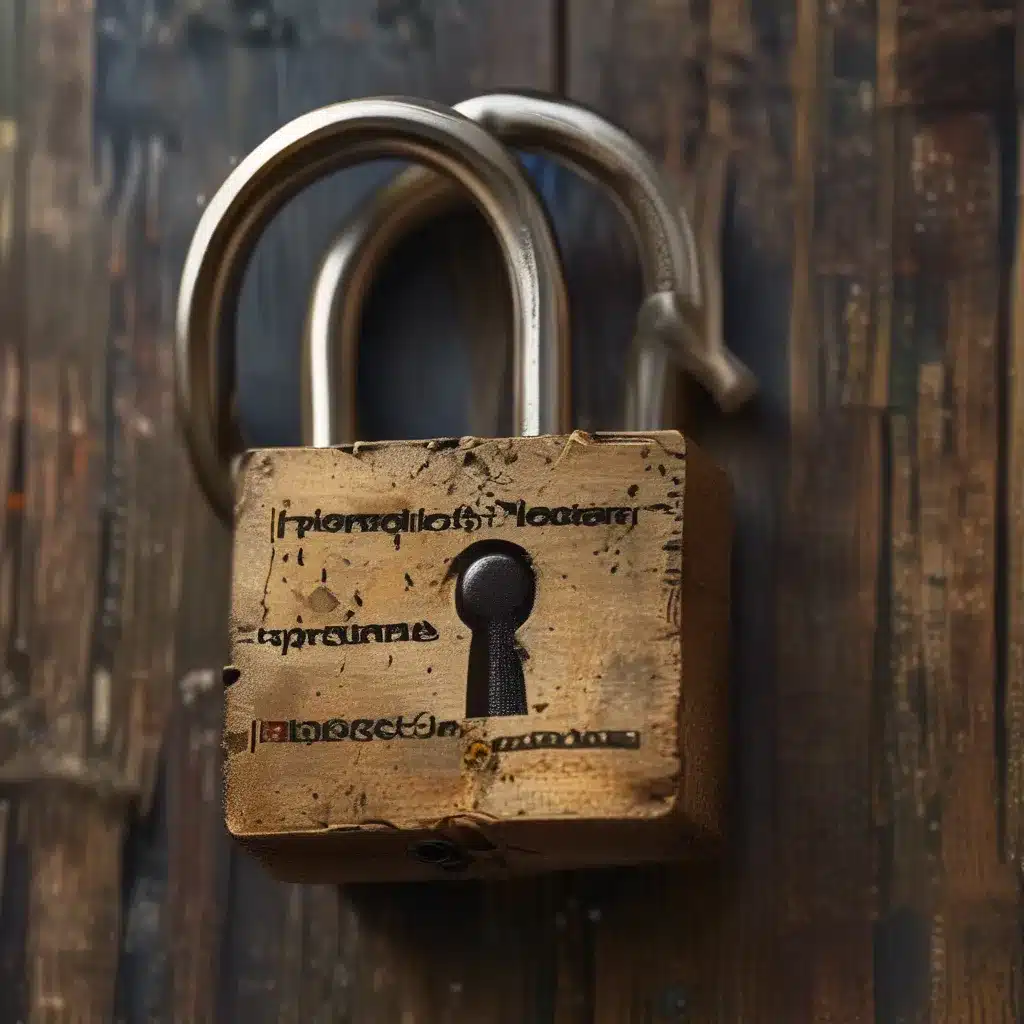
The Perils of Losing Your Password
Oh, the dreaded moment when you’ve completely forgotten your password. It’s like that feeling you get when you misplace your car keys – that sinking sensation in the pit of your stomach, followed by a frantic search through every nook and cranny of your home. Except, in this case, it’s your digital life that’s under lock and key, and the consequences can be far more severe.
I’ll never forget the time I got locked out of my WD My Passport drive. I had been meticulously backing up all my family photos, personal documents, and precious memories onto that little gray block, and then – poof! – the password vanished from my mind. It was as if my brain had undergone a digital lobotomy.
As I discovered on the WD community forum, I was not alone in my plight. Many others had encountered the same frustrating scenario, where a simple forgotten password had turned their beloved storage device into an expensive paperweight. The manual warned that there was no way to recover the data without the correct passcode – it was either wipe the drive clean or resign myself to a life of digital destitution.
Unlocking the Mysteries of Password Recovery
Now, I’m not the most tech-savvy person on the planet, but I’m also not one to give up without a fight. I scoured the internet, scouring forums and articles, determined to find a solution that wouldn’t force me to sacrifice all my precious data.
That’s when I stumbled upon the Spiceworks community, where IT professionals were discussing the ins and outs of password management. Apparently, there are a few tools out there that can help regular users unlock and reset passwords, without having to delve into the depths of Active Directory.
One of the options mentioned was a tool called Unlock Users.exe, which could potentially give me the power to regain access to my WD drive. However, as the IT experts cautioned, this kind of functionality can be a double-edged sword, as it could also open the door to security vulnerabilities if not implemented properly.
Finding the Right Solution
Determined to find a solution that wouldn’t compromise my data or my system’s security, I continued my search. That’s when I discovered a helpful article on the Microsoft Tech Community that outlined a more secure approach to password management.
The article explained that, while you can’t directly reset passwords for other users in Active Directory, you can delegate certain permissions to specific individuals or groups. This way, you can empower your IT support staff or trusted employees to handle password resets and account unlocks for their respective departments, without granting them full administrative access.
Intrigued by this idea, I started to explore password management tools like Adaxes and Lepide Active Directory Self Service, which seemed to offer the kind of granular control and delegation that I was looking for. The prospect of being able to securely reset my own forgotten password, or even help out my colleagues when they find themselves in a similar predicament, was incredibly appealing.
Restoring Access and Securing the Future
After some careful research and experimentation, I finally found a solution that worked for me. With the help of a password recovery tool, I was able to regain access to my WD My Passport drive, and breathe a sigh of relief as I retrieved all my precious data.
But the true lesson I learned through this ordeal is the importance of proactive password management. As the team at ITFix.org.uk would surely agree, it’s not enough to simply set a password and forget it. We need to be diligent in keeping track of our login credentials, whether it’s through a secure password manager or a well-organized file.
And for those times when even our best efforts fail, it’s reassuring to know that there are tools and techniques available to help us regain access without compromising our data or system security. So the next time you find yourself staring at a locked screen, don’t panic – take a deep breath, and get ready to unlock the power of password recovery.












